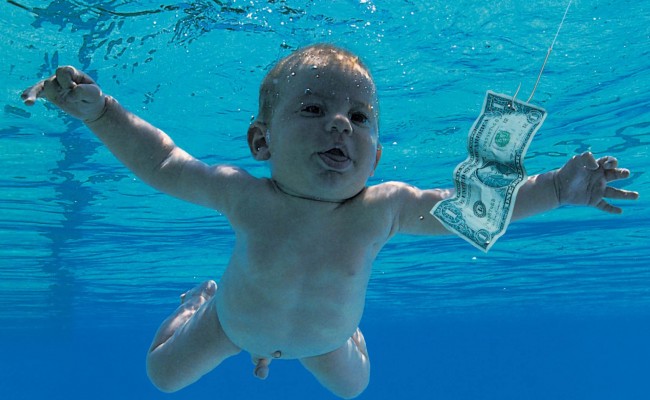Twenty-five years since the album’s release, it is very easy to become wistful when talking about Nirvana’s Nevermind. Having not been born when the album hit number one, I’ve tried to imagine the extent of Nevermind’s fame: three million sales in the first four months, 100,000 every week for the next two years, ‘Teen Spirit’ top-of-the-charts thus kicking out Michael Jackson (kicking out the 80s) and seventeen re-issues and re-releases.
Numbers like these are generally not associated with punk bands. While I can’t tell you the lived experience of the era of these numbers, there is a certain contemporary experience of Nirvana today; a meaning that isn’t caught in the band’s numerous reissues, Cobain anecdotes, record sales or nostalgia. To play punk and certain strains of rock today, even in Australia, is to be caught – knowingly or not – in the legacy of Nirvana.
But Nirvana’s legacy isn’t the kind that exudes an anxiety of influence. Rather the opposite has occurred: Nevermind was the tipping point where the political and aesthetic ironies of rock music and rock culture met. If we are to believe the hype, it was the moment where rock music died one of its many terrible deaths. Upon closer scrutiny, the exact opposite occurred.
I came to Nevermind through a boy and a book. I was thirteen, with a typical thirteen-year-old crush. He was older with long hair, a skateboard, and a Nirvana t-shirt hidden beneath his white school shirt. I was in love with ABBA, The Bee Gees and So Fresh compilations; Nirvana was a meaningless sign. To prove my intellectual worth to this boy, I went to the library and borrowed the biggest book on Nirvana I could find – Everett True’s Nirvana: The True Story. I was so enraptured that I decided to borrow the Nevermind CD too (a gesture that seems impossibly quaint now). The listening of my first punk album was the discovery of something else entirely: this is what music can do! The memory is wedged so resolutely, so viscerally, that I can only think about it through sentiment.
True’s book soon became an essential start of my teenage years, a spiral from Nirvana outward – the Pixies, Sonic Youth, William S Burroughs, Supergrass, Bikini Kill, L7, Hole, Sex Pistols, The Clash, Charles Bukowski, PJ Harvey, Babes in Toyland, The Beatles, Black Flag, Black Sabbath, The Velvet Underground, Iggy Pop, the Melvins, Mike Patton, Wipers and on and on and on. It was a relentless reconfiguring that situated Nirvana at the centre of an alternative-cum-mainstream aesthetic culture, a divergent culture that my friends and I lived our teenage years through.
Yet this feeling of alterity was shattered in math class when, a few years later, one of the so-called popular kids started singing, ‘If you ever need anything please don’t hesitate to ask someone else first / I’m too busy acting like I’m not naive / I’ve seen it all / I was here first’. Then footballers started wearing Led Zeppelin shirts, jocks pinned Pink Floyd and Mudhoney badges to their $10 canvas bags and conversations with weird peers became tolerated. Suddenly everyone wanted to be alternative and so the alternative became the mainstream.
My high school was a microcosm for what happened to culture at large. It was rock ’n’ roll packaged as contemporary identity, self-recognition and pithy transcendence. Yet even this seemed beside-the-point when, walking home from the bus stop, I saw a BMW of white boys blasting Biggie Smalls, and my concerns over the loss of rock ’n’ roll seemed incomparable when watching the elite drive around, happily proclaiming the protests of the exploited.
If like me, you valued rock, punk or hip-hop as a type of resistance, or as music made by-and-for the working, lower and disregarded classes, you’d know that contemporary culture and capitalism do not respect these neat barriers. As Greil Marcus puts it:
The question of the death of rock comes up because rock and roll – as a cultural force rather than a catchphrase – no longer seems to mean anything. It no longer seems to speak in unknown tongues that turn into new and common languages, to say anything that is not immediately translated back into the dominant discourse of our day: the discourse of corporatism, selfishness, crime, racism, sexism, homophobia, government, propaganda, scapegoating, and happy endings.
While I know, and Greil Marcus knows, this isn’t always rock music’s story, it’s a circularity that’s vividly present. In my adolescence I learned the hard lesson that music was not solely mine. That it simultaneously belonged to culture – and despite punk, rock and hip-hop’s protests, they had became part of, and loved by, the very things they were spawned to retaliate. Music at times had challenged the mainstream, but no music had truly beaten capitalism or any other –ism. Instead the mainstream simply grew to accommodate whatever was set against it. The grandest recuperation of punk-rock’s politics and ideology happened with Nevermind: it was 1991 and ‘the year punk broke’ in more ways than one.
‘After all,’ wrote Thurston Moore, ‘the kids chose Nevermind.’ A big dumb accident. Nirvana’s label Geffen couldn’t possibly have known the weight of popularity and paradoxes that Nevermind carried – experimental aesthetics with popular compositions, sincerity and irony, aggressive music and gentle personas, the rock ’n’ roll genius and the punk amateur, performance and vulnerability, DIY-turned-blockbuster, the small-town locality of grunge among transglobal music charts, the desire to record a great pop-rock-punk album, the urge to destroy rock’s marketplace altogether, to centre the self and obliterate the self. Other bands and artists clearly straddle these lines, but where Nevermind goes further is the unintentionality of its overwhelming popularity. The album saw the eventual symbiosis of the conflict between punk and the rock marketplace: unprecedented commercialism.
Nirvana recognised their paradoxical position. As Fisher writes in Capitalist Realism, ‘Cobain knew that he was just another piece of spectacle, that nothing runs better on MTV than a protest against MTV; knew that his every move was a cliché scripted in advance, knew that even realising it is a cliché.’ Nirvana made bratty remarks about the New Alternative bands lauded by MTV. Cobain wore a shirt stating CORPORATE MAGAZINES STILL SUCK on the front cover of Rolling Stone and Nirvana’s initial record label, Sub Pop, created a fake lexicon of grunge that the media too-eagerly rolled with. Inherent to rock is the perpetual performance of spectacle and Nirvana continuously tried to go beyond the paradox of their rebellion-cum-commodity by acknowledging and referencing their performance, as if by acknowledging their own hypocritical state, they might outperform themselves.
Kurt Cobain clearly knew rock music inside-out: its compositional structures, its imagery, its performance, its dual sincerity and irony, its total silliness and utter seriousness. He re-packaged what the Beatles told us all along – rock is marketplace, rock is art. Yet when listening to Nevermind now, there are suspended moments where the marketplace and the performance do not matter; moments when there is something more essential, more truthful, at hand. That Nevermind has a political and social life far beyond its own recognition does not always invade the album’s inner-sentiments, its personal and near-quotidian issues, what it does with rock ’n’ roll.
What is ultimately worth celebrating about Nevermind are the crevices of survival. The moments that show that you can run through capitalism and still come out with something intact.
Do you know why there was never a grunge movement in Australia in the early 1990s?
No, why?
Because grunge is really just the resurgence of Big Dumb Rock and in Australia, Big Dumb Rock never went away.
And so the joke goes. While certain strands of Big Dumb Rock can readily be found in pubs Australia-wide on Saturday nights, grunge is now something for fourteen-year-olds to temporarily borrow from the 90s, until realising some things are best left where we found them. Nowadays it’s the implicit aesthetics of Nevermind that register – the continual experimentation of typical pop and rock forms, and a fondness for one’s own locality, delivered by Cobain’s love of Aberdeen’s avant-garde.
What Nevermind gives us culturally is something else altogether. Nevermind was the dual register of being both mainstream and against-the-mainstream and it bestowed to a younger generation – my generation – the cultural paradox that we live and create through. Contemporary mainstream culture is simultaneously mainstream and alternative. Taylor Swift, Lorde, St Vincent, Sia, Beyoncé, Miley Cyrus, all rendering elements of alternative-thinking as mainstream. Or maybe to be mainstream, there must be some divergent quality, pseudo or not. (Of course I’m also sceptical of my own polemics – alternative versus mainstream – and perhaps an alternative culture or aesthetic is not impossible; we all swim through this confused blurring that capitalism’s intensification has awarded us.)
By virtue of its commercial success, Nevermind was the first album to truly live out the mainstream-alternative paradox and rather than tiresomely declaring rock as finished, Nevermind gave us a different conclusion. Having punk and commercialism so tightly melded was like a form of collective therapy that allowed us to acknowledge the hypocritical state of rock music’s ideals. Nevermind didn’t only expand our idea of what rock music can be, but made us face certain relations between rock and commercialism we hadn’t previously lived up to. It’s hard to tell if this plagues the average local band, or if it’s a kind of freedom; probably both.
Of course there’s a type of person, young and old, who uses Nevermind as the temporal marker of rock’s most recent death. Not only do these people forget that rock music is perpetually dying – that it has death and destruction built into it’s narrative from Sex Pistols to Lydia Lunch – but that in their eagerness to throw rock – and Nevermind – to the gutter, they’re pouring something very valuable down the drain.
Image: Cover of Nevermind.






